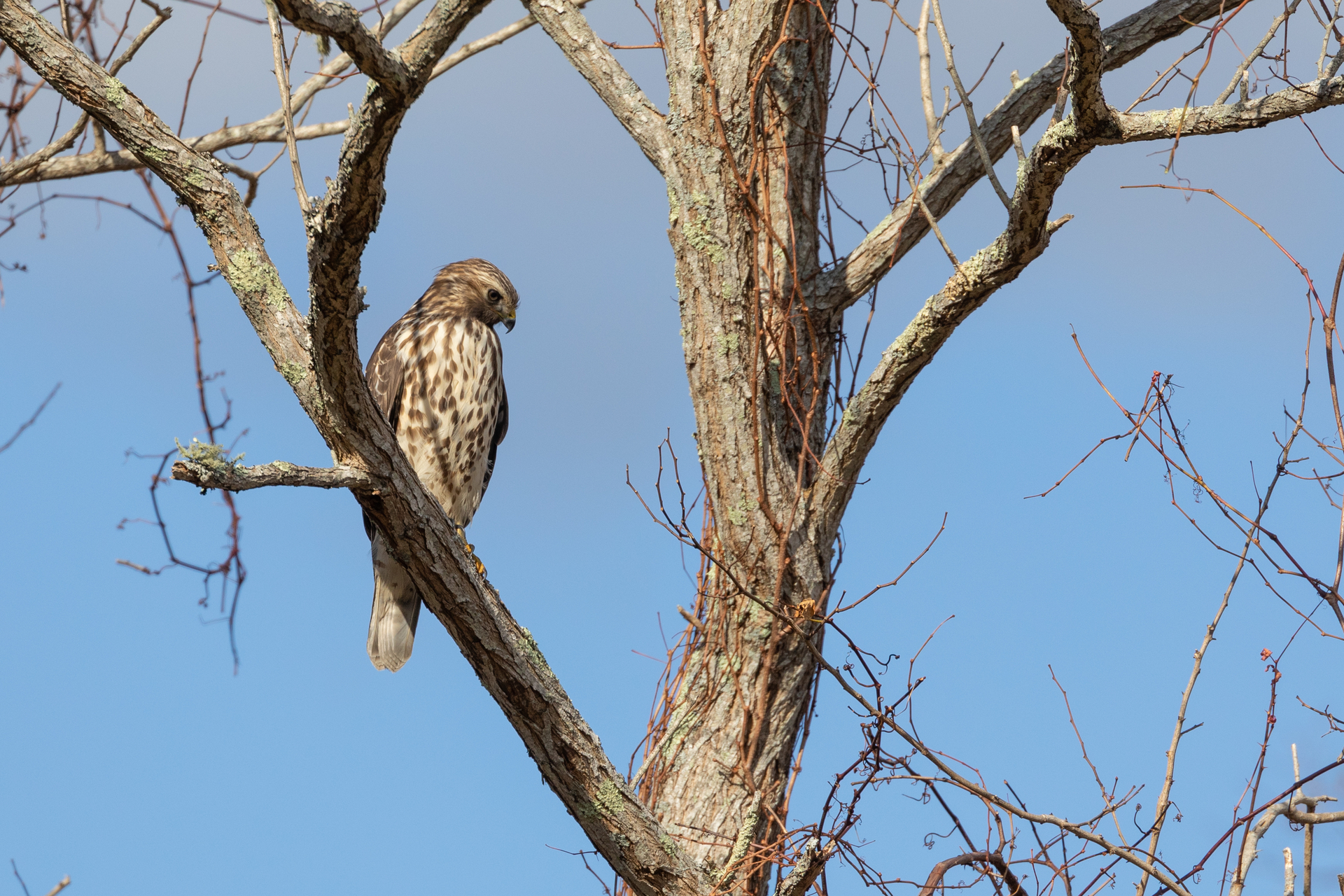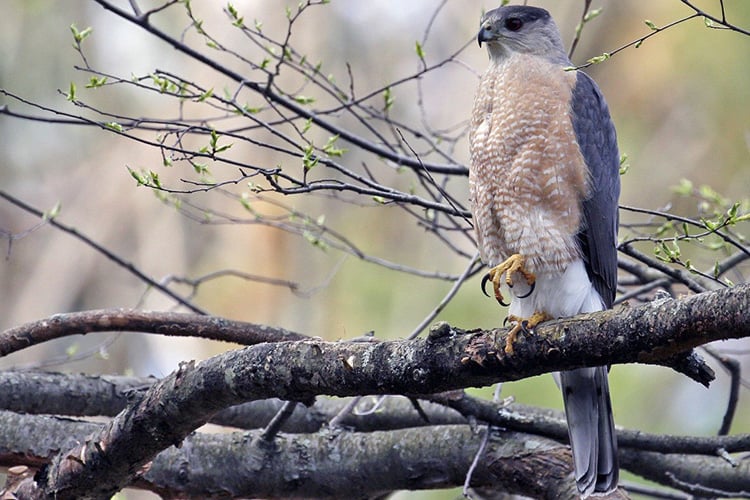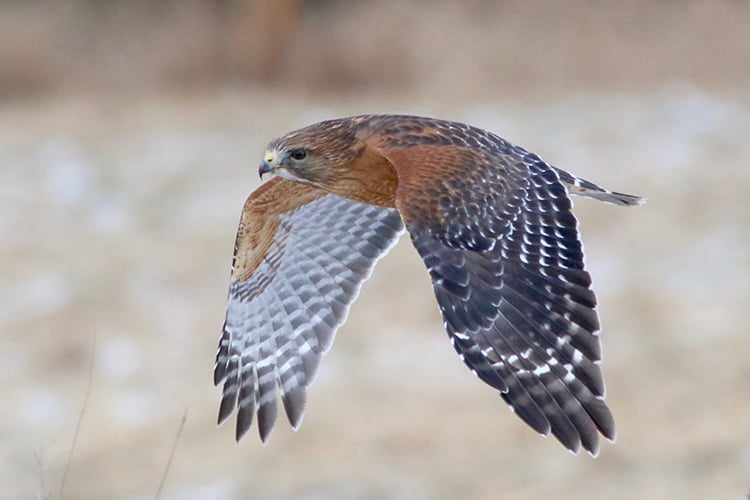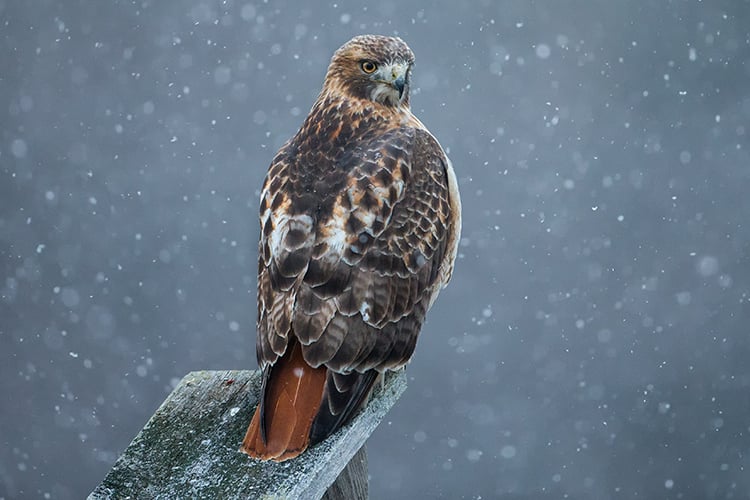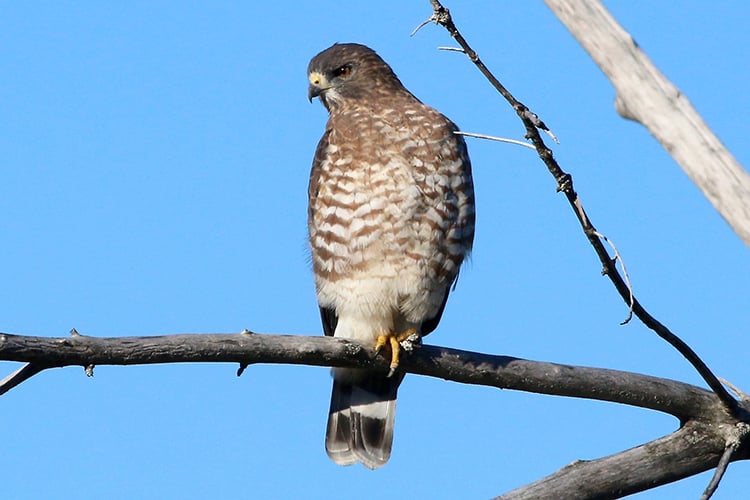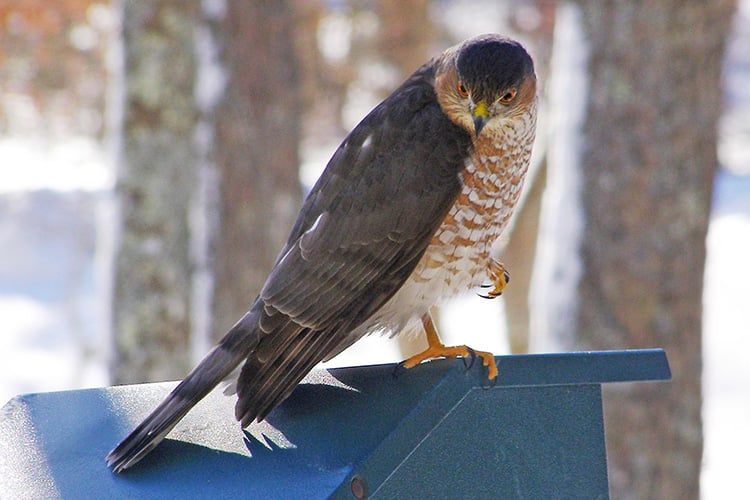Birds & Birding
How to Hawk Watch
You wake before sunrise, grab a thermos of coffee, your backpack, and binoculars, and navigate your way up to your favorite summit. The morning air feels cool, and a light northwest wind is rustling leaves in a nearby tree.
And then the birds begin to appear—several Sharp-shinned Hawks first, followed by one or two Cooper’s Hawks, then a Red-shouldered Hawk. And on a distant horizon, a group of four to five Red-tailed Hawks struggles to catch a thermal, each bird soaring at its own altitude.
Welcome to the season of fall hawk migration, a time of year when thousands of hawks and their young annually move through the state from northern breeding grounds to wintering areas often far to the south.
Before you head for the hills, read on for hawk watching tips and tricks.
1. Check the Weather
The best fall migration conditions typically occur on the heels of the passage of a high-pressure system (a cold front) along with accompanying northwesterly winds. When this happens, the cold, clear air from the high-pressure system rides over the warmer ground temperatures. On a sunny day, this creates thermals—columns of warm air that rise high above the ground and provide the lift that allows hawks to soar easily.
2. Pick the Right Spot
Look for a site—a mountain, hill, ridge, open field, or sand dune—with a view to the north or northwest.
In the fall, Mount Tom State Reservation (Easthampton), Wachusett Mountain State Reservation (Princeton), and Mount Watatic Reservation (Ashburnham) are especially good for hawk watching.
Parker River National Wildlife Refuge (Newburyport) and Cape Cod National Seashore are great for spring hawk watching. Each year, Wellfleet Bay and Eastern Massachusetts Hawk Watch record data at Pilgrim Heights in the Cape Cod National Sea Shore. Peak season for migrating raptors at Pilgrim Heights is mid-April through mid-May.
3. Pick the Right Time
On favorable days for migration, hawks often begin moving shortly after sunrise. Prime time is between 8 am and 4 pm.
The best time to go hawk watching is during their fall migration, which begins in August and peaks in September. During this time, the most numerous hawks are the Broad-winged Hawk, which at times can be seen in flocks, or kettles, of hundreds, occasionally thousands of birds, "boiling" high into the sky.
Fewer raptors are generally seen during spring migration, which runs mid-April to mid-May, but can be rewarding at many coastal sites.
4. Gear Up
Hawk-watching sites can get cold, so bundle up. And don’t forget to pack snacks and water, binoculars, a field guide, and a compass and map.
5. Know Your Birds of Prey
The term “hawk” has been applied to many birds of prey, some related, some not. Knowing the basic birds of prey species in Massachusetts can help you better identify these birds.
Accipiters
Massachusetts hosts three Accipiter species: Sharp-shinned Hawk, Cooper’s Hawk, and Northern Goshawk. These bird-eating hawks are long-tailed and have relatively short, rounded wings. Since they’re often very similar in appearance, they can be tricky to identify.
Buteos
Buteos are stockier in build than the accipiters. Their preferred food often comprises small mammals, but they will also feed on birds, reptiles, and even insects. Buteos include the Rough-legged Hawk, Red-tailed Hawk, Broad-winged Hawk, and Red-shouldered Hawk.
Falcons
American Kestrel, Peregrine Falcon, and merlin are all considered falcons, which rely on their speed and agility to capture their prey. Scientists used to classify falcons among the hawks but have recently determined that these birds are more closely related to woodpeckers!
Upcoming Programs on Hawks
See MoreA Nature Year at Pleasant Valley
-
Pleasant Valley Wildlife Sanctuary, Lenox
-
12 classes starting
Saturday, January 17
9:00-11:00am
Adults
Raptor Roundup: Meet Live Birds of Prey
-
Ipswich River Wildlife Sanctuary, Topsfield
-
Sunday, January 25
11:00am-12:30pm
Adults & Families - 0 - 17
Nature and Art at The Nest: Explore, Gather, and Create - Series
-
Museum of American Bird Art Education Center, Canton
-
5 classes starting
Saturday, February 21
11:30am-1:30pm
Families - children 5 - 17
Nature and Art at The Nest: Explore, Gather, and Create
-
Museum of American Bird Art Education Center, Canton
-
Saturday, February 21
11:30am-1:30pm
Families - children 5 - 17
Nature and Art at The Nest: Explore, Gather, and Create
-
Museum of American Bird Art Education Center, Canton
-
Saturday, March 14
11:30am-1:30pm
Families - children 5 - 17
Cheep Eats: Winter Raptors
-
Wellfleet Bay Wildlife Sanctuary, South Wellfleet
-
Thursday, March 26
11:00-11:45am
Adults
Stay Connected
Don't miss a beat on all the ways you can get outdoors, celebrate nature, and get involved.



